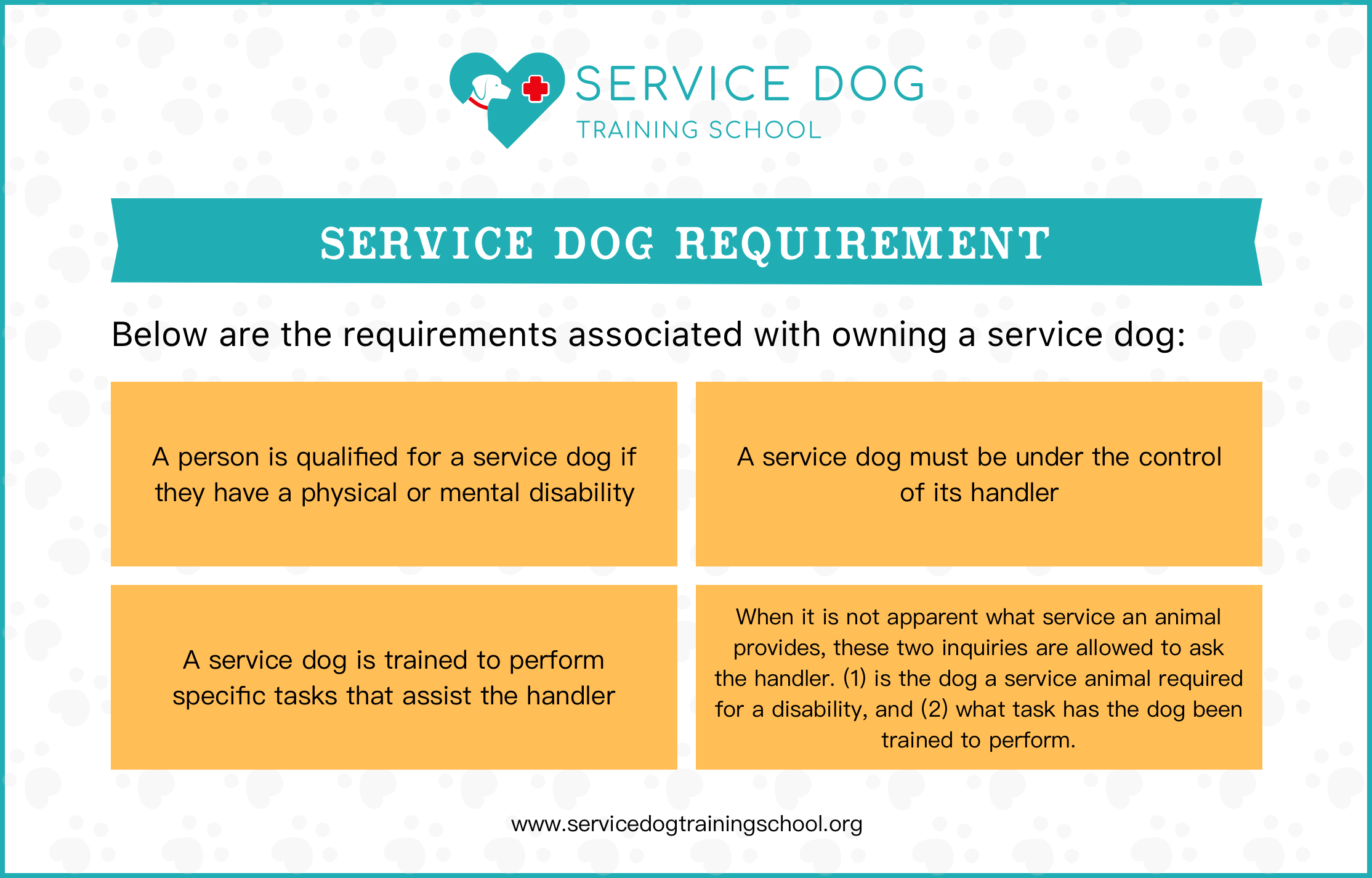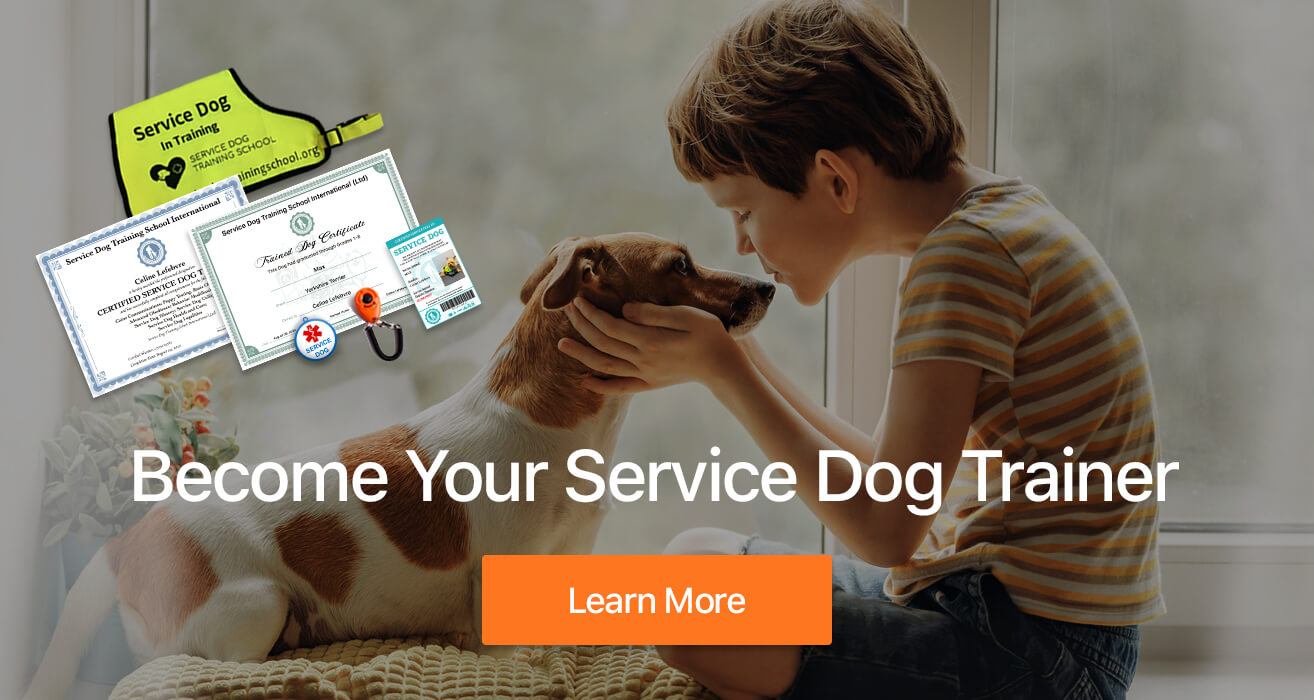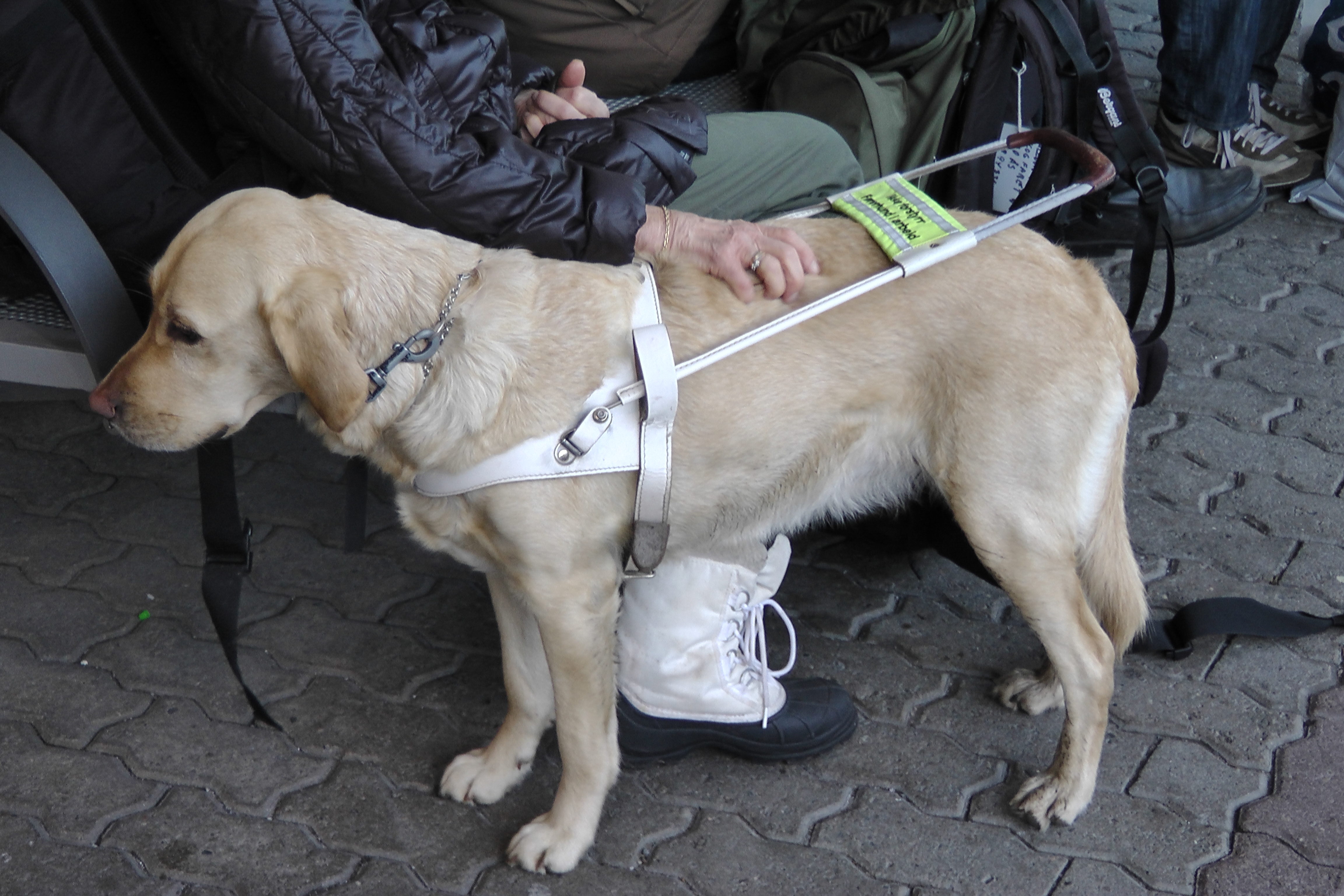
We have had many inquiries about service dogs in Canada over the years. In contrast to the Americans with Disability Act (ADA), which has clearly defined service dogs in the United States, there is no uniform legal definition of a “service animal” in Canada. There is a multitude of regulatory systems in every province, territory, and federal level that either explicitly or implicitly address the use of assistance animals.
Depending on your reason for having a service dog, the steps to getting one in Canada are slightly different. Let’s take a closer look at these so we can identify and respond to concerns about service dogs!
Service Dog requirements in Canada
Most people would agree with the following:
- A service dog has been individually trained by an organization or person specializing in service dog training and
- Performs a task to assist a person with a disability with a special need related to their disability.
Even though there are a variety of laws and regulations that address service dogs in Canada, owning a service dog should meet the following requirements:

How to get a service dog in Canada
1. Get a Service Dog from an organization
Some organizations are non-profits, others are for-profit.
Non-profits can have extremely long waiting lists. Because the demand exceeds the supply many times over, you may have to wait more than 2 years. Some non-profits provide only their own dogs that have been trained by the organization, while other non-profits will help you do the training with your canine partner for certification.
For-profit organizations may provide quicker access to a well-trained service dog, but the prices can be high, ranging from $25,000 - $60,000.
2. Make your dog a service dog
According to the International Association for Assistance Dog Partners (IAADP), you can train your dog to become any type of service dog you need. To self-train a service dog, here is some basic information about what you are getting into before you commit to the process.
Point 1 Choose the breed that suits your lifestyle & needed tasks
Pick a breed that will best fit to mitigate your disability and work with you. If you want to raise and train a puppy or adolescent for future service work, you should choose one with the temperament for the job. Or you can choose an adult dog from a stable home environment that already has the right traits.
Point 2 You will learn how to train a dog and can train other tasks as needed
This can be the most challenging part. It can be hard to find moral and local support when looking for a training structure or finding a solution to correct the dog’s bad behavior in training. Many of the owner-trainers had gone through the frustrating experience of spending numerous hours on the telephone gathering or receiving information only to find that they offer a limited perspective on a complex field.
For professional training support and guides, the Online Certified Intensive Service Dog Training Course can be a good option. This course provides a simple yet comprehensive step-by-step guide to service dog training so you can successfully train your own service dog.
Point 3 Responsibilities of the service dog handler in public
The handler must keep control of the dog at all times.
The handler is liable for any damages caused by the service dog.
The handler is required to clean up or make arrangements that it is cleaned up if their service dog leaves urine or feces in a public place.
A service dog should not growl, bark aggressively, snap, bite, or lunge.
If the service dog displays behavior that is aggressive or disturbs other people or animals, the service dog team can be asked to leave.
3. How to certify a service dog in Canada
Depending on which country, state, and province you live in, the laws governing access for trained service dogs and service dogs-in-training vary.
Service Dog Canada Legislation References and Resources:
Alberta
British Columbia
Manitoba
• The Service Animals Protection Act
New Brunswick
Newfoundland & Labrador
Northwest Territories
Nova Scotia
Nunavut
Ontario
• Accessibility for Ontarians with Disabilities Act
Prince Edward Island
Quebec
• Individuals with Disabilities Act
• Charter of Human Rights and Freedoms
Saskatchewan
Types of Service Dog
Service animals support people with disabilities in many different ways. In Canada, multiple terms are used to refer to assistance animals, including “guide dog”, “service dog”, “hearing dog” or “service animal”.
Although there may be some overlap between these categories, it is generally understood that service dogs fall into one or more of the following categories.
General Assistance Dogs — allow their handlers to function independently or increase their independence
Guide Dogs (Eye-seeing Dogs) for blind individuals - work with their handler to avoid unsafe situations
Hearing Dogs for hearing impairment individuals - help navigate and keep their handlers out of danger
PTSD Service Dogs - respond quickly to nightmares or flashbacks experienced by people with PTSD, they offer nudges and have a calm disposition
Diabetics Service Dogs - smell and alert diabetic handlers in advance of low or high blood sugar incidents
Autism Service Dogs - calm children and adults with autism in high anxiety situations or while in public, etc.
Seizure Alert Dogs - predict and alert handlers of impending seizures
Seizure Response Dogs - provide medical assistance to those who are experiencing an epileptic seizure such as bringing medication
Conclusion
Services dogs have been shown to make a significant difference to many people with disabilities — increased independence, social relationships, self-esteem, and life satisfaction, and decreased anxiety, stress, and loneliness. If you are living in Canada and are considering getting a service dog, we encourage you to review the information above and thoroughly investigate your options.












